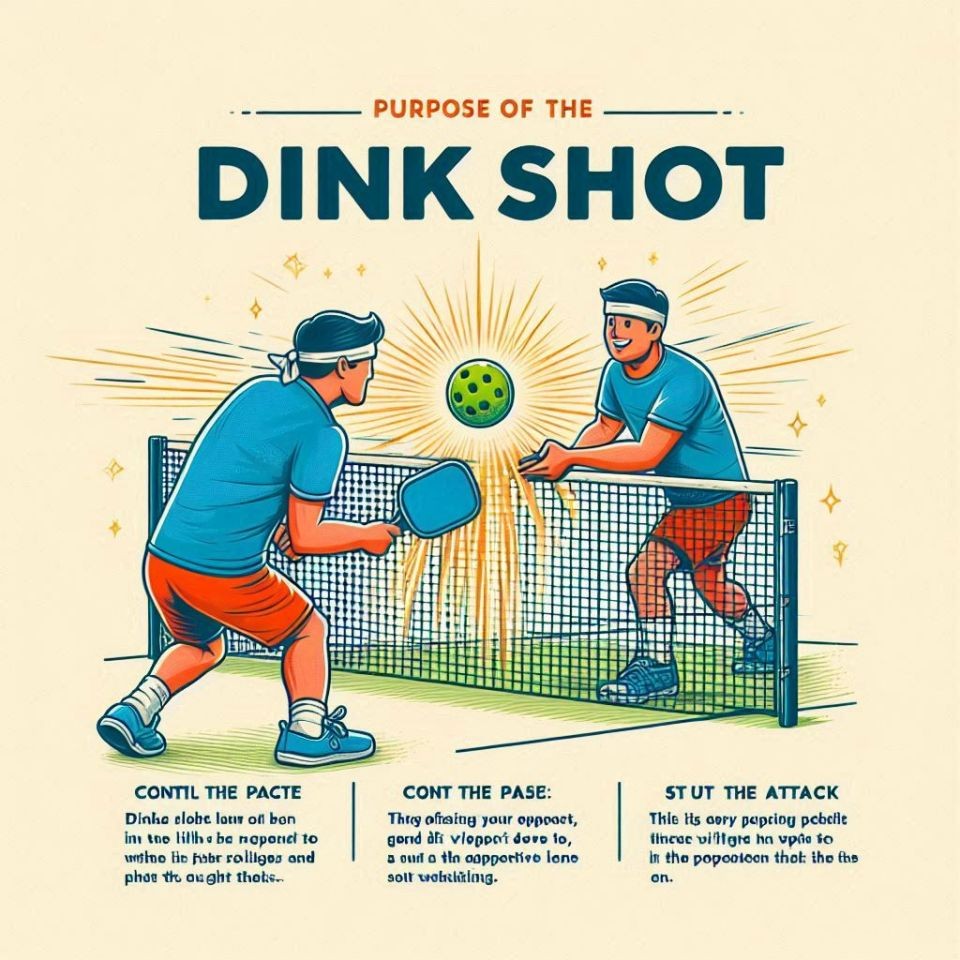The dink shot is a fundamental technique in pickleball, often used in both singles and doubles play. It's a soft shot designed to land just over the net in your opponent's non-volley zone (often called the "kitchen"), making it difficult for them to attack.
Purpose of the Dink Shot- Control the Pace: The dink shot slows down the pace of the game, allowing you to take control and force your opponent to hit a less aggressive shot.
- Set Up the Attack: By forcing your opponent to return a shot from low and close to the net, you set up opportunities for them to make an error or hit a weak shot that you can then attack.
- Extend Rallies: Dinks are often used to engage in a soft, strategic exchange at the net, testing your opponent's patience and precision.
- Grip: Use a continental grip, which allows for greater control and a softer touch.
- Stance: Stay balanced with your feet shoulder-width apart. Bend your knees slightly to lower your center of gravity, which helps in making the soft, controlled contact required for a dink.
- Paddle Position: Keep your paddle face open and in front of you, slightly below the ball. This allows you to lift the ball softly over the net.
- Swing: Use a short, controlled swing, focusing on guiding the ball rather than hitting it. The movement should be smooth and fluid, with your paddle moving in an upward motion to lift the ball over the net.
- Follow Through: Your follow-through should be minimal. The focus is on control, so after making contact with the ball, stop your paddle in a controlled manner just after hitting the ball.
- Aim: Aim to place the ball just over the net and land it as close to the kitchen line as possible. This makes it harder for your opponent to reach the ball and hit an aggressive return.
- During Net Exchanges: When both teams are at the net, dinking can keep the ball low and prevent your opponent from attacking.
- To Change the Pace: If your opponent is hitting hard and fast, a dink can disrupt their rhythm.
- To Tire Your Opponent: Extended dink rallies require patience and precision. If your opponent is prone to frustration or impatience, they may make an error.
- Stay Low: Bend your knees and stay in a low, ready position to quickly move forward or to the side to reach the dink.
- Be Patient: Don't rush to attack a well-placed dink. Keep the ball in play and wait for an opportunity to hit a higher shot.
- Watch for Mistakes: Opponents may make errors during dink exchanges, such as hitting the ball into the net or popping it up too high, giving you a chance to attack.
The dink shot is a critical part of pickleball strategy, requiring precision, patience, and control. Mastering the dink can help you control the pace of the game, outmaneuver your opponents, and set up winning shots.
